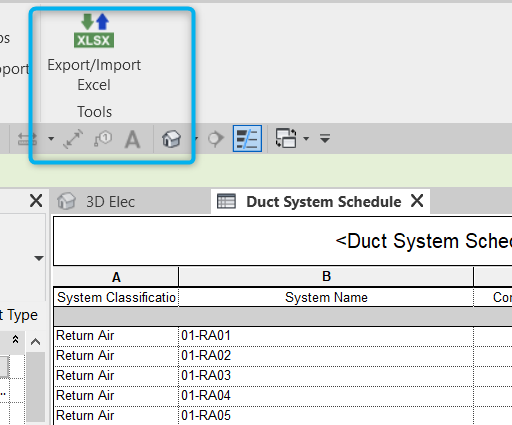Opening New Capabilities: Enhance Revit Tools with the Right Plugins
Wiki Article
Mastering the Art of Information Combination: How to Seamlessly Import Excel Record Into Revit
Are you having a hard time to import Excel data right into Revit smoothly? Look no more! In this short article, we will certainly guide you with the process of grasping the art of information combination. Discover the relevance of seamless combination in Revit and discover the Excel documents style for Revit assimilation. Prepare to prepare your Excel data effortlessly and follow our step-by-step guide to import documents into Revit. With our finest practices, you'll attain information combination success in a snap. Let's begin!Understanding the Value of Information Assimilation in Revit
Understanding the significance of data combination in Revit is vital for smooth importing of Excel data. When you integrate data from Excel into Revit, it allows you to successfully take care of and update information throughout the entire project. This assimilation guarantees that your style and building process is exact and up-to-date.By incorporating information, you can easily import and update parameters, schedules, and also geometry in Revit. This gets rid of the requirement for manual information entrance, saving you time and lowering the danger of errors. With Revit's data integration capabilities, you can keep uniformity and precision in your project, while additionally improving cooperation among employee.

Checking Out the Excel File Layout for Revit Combination

In order to effectively incorporate Excel files right into Revit, it is important to make certain that the information is formatted properly. This consists of effectively classifying columns and rows, as well as structuring the information in a way that is suitable with Revit's information schema. Revit uses particular specifications and classifications to organize data, so it is very important to straighten the Excel data with these specifications to guarantee a seamless integration.
In addition, it is essential to keep in mind that Revit only supports particular information kinds when importing from Excel. These include text, numbers, and dates. Any various other information types, such as formulas or conditional format, will not be recognized by Revit and might trigger issues during the integration procedure.
Preparing Your Excel Data for Seamless Import Into Revit
To make certain a smooth assimilation process, you'll need to appropriately style and tag the columns and rows in your Excel data before importing it into Revit. Since it allows Revit to properly interpret and arrange your information, this step is important. Beginning by analyzing your Excel information and identifying which columns and rows have appropriate details for your Revit job. Make sure to label each column with a clear and descriptive header. This will assist you and others quickly understand the purpose of each column and prevent complication during the import procedure.Next, guarantee that the data in each column is correctly formatted. As an example, if you have a column for dimensions, make sure import excel into revit that all dimensions are regularly formatted in the same units of measurement. Revit depends on constant formatting to accurately interpret and import data.
In addition, it is necessary to look for any kind of vacant cells or incongruities in your information. Revit may not be able to review or import information from cells that are empty or include errors. Consequently, it is advised to examine your Excel data and tidy up any kind of incongruities prior to importing it into Revit.
Step-By-Step Guide to Importing Excel Record Into Revit
As soon as you've properly formatted and classified your Excel information, you can quickly import it into Revit by following this step-by-step overview. To start, open Revit and navigate to the "Insert" tab. Click on "Import CAD" and pick "Import Excel" from the dropdown food selection. A new home window will show up, asking you to find the Excel file you wish to import. Search your computer and pick the Excel file, then click "Open."Next, a dialog box will show up, enabling you to tailor the import settings. Below, you can select the worksheet you intend to import, specify the variety of cells to import, and select the proper systems for your information. When you have actually made your choices, click "OK" to proceed.
Revit will currently display a preview of your Excel information. Take a moment to guarantee and assess the preview that every little thing looks appropriate. If required, you can make changes to the import settings by clicking on the "Setups" button.
Ideal Practices for Data Combination Success in Revit
Make certain you adhere to these finest methods to guarantee successful combination of data in Revit. It is important to organize your data in Excel prior to importing it right into Revit. Be conscious of the units and data kinds when mapping the information, as any kind of disparities can lead to mistakes in the combination process.Another important practice is to routinely validate and upgrade your data. As your project proceeds, it is necessary to keep your Excel data approximately day with any modifications made in Revit. This will certainly assist preserve the precision and uniformity of your data throughout both platforms. Additionally, take advantage of data validation devices within Revit to determine any errors or variances in the incorporated data.
Lastly, it is suggested to develop a clear operations for information assimilation. This consists of specifying duties and functions, establishing a communication channel in between employee, and developing a regular tempo for information updates and evaluations. By complying with these best methods, you can make certain a smooth and successful assimilation of information in Revit, eventually boosting the efficiency and accuracy of your task.
Final Thought
In verdict, understanding the art of information combination is vital for smooth import of Excel files into Revit. Comprehending the significance of data integration in Revit is the first step in the direction of effective assimilation.When importing information from Excel into Revit, it is essential to understand the file layout and just how it can impact the combination process (revit tool). Revit utilizes particular parameters and categories to arrange information, so it is crucial to line up the Excel data with these parameters to make certain a smooth combination
Be mindful of the devices and information kinds when mapping the information, as any type of discrepancies can lead to mistakes in the combination process.
In addition, make use of information recognition tools within Revit to recognize any type of errors or inconsistencies in the incorporated data.

Report this wiki page